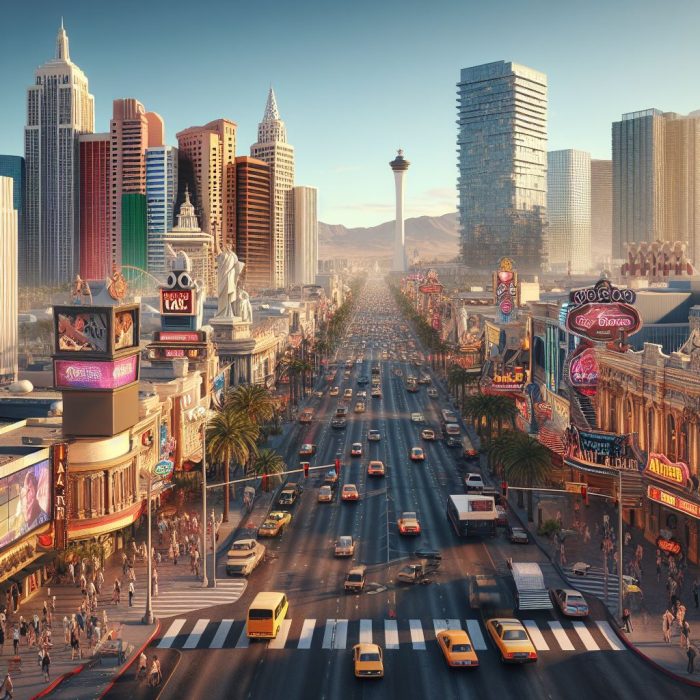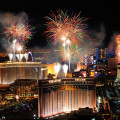
The Evolution of the Las Vegas Strip: A Journey Through Time
Introduction
In the heart of the Nevada desert lies the Las Vegas Strip, a dazzling stretch of entertainment and luxury. Over the years, this iconic avenue has transformed from a simple railroad water-stop into one of the world’s most visited tourist destinations. Let’s embark on a captivating journey through its history.
1930s-1940s: The Birth of a Neon Oasis
Before the 1930s, Las Vegas was merely a stopover for travelers. But the inception of the Boulder Dam (later renamed Hoover Dam), coupled with Nevada’s lenient marriage and divorce laws, gave rise to a small influx of visitors. The legalizing of gambling in 1931 turned the tide. The El Rancho Vegas, opened in 1941, was the first resort on what would become the Strip. By the end of the 1940s, establishments like the Last Frontier and the Flamingo set the precedent for an entertainment-focused Las Vegas.
1950s: Rat Pack and the Rise of Entertainment
The 1950s were golden years. Lavish new hotels, including the Desert Inn, Sands, and the Riviera, sprouted. The presence of celebrities, notably the Rat Pack – Frank Sinatra, Dean Martin, Sammy Davis Jr., and others – gave the Strip a reputation for world-class entertainment. Atomic tourism was peculiar to this era; tourists watched atomic tests from hotel rooftops, adding a unique twist to Vegas’ allure.
1960s-1970s: Corporate Interests and Family Appeal
In the 1960s, the allure of the Strip caught the eyes of corporate America. The Stardust and Caesars Palace, launched in this era, showed the grandeur of corporate investment. Yet, the 70s experienced challenges with regulatory changes and competition. In response, Las Vegas tried to diversify its appeal. While still a hub for adult entertainment, ventures like Circus Circus targeted families.
1980s: Mega Resorts and The Mirage Miracle
The 1980s marked the era of mega resorts. Steve Wynn, a pivotal figure, opened The Mirage in 1989. With its erupting volcano and exotic theme, it became a template for the next wave of resorts, pushing out older establishments.
1990s: A New Skyline and The Bellagio Effect
The Strip’s skyline kept evolving. The Luxor with its pyramid shape, MGM Grand with its emerald green facade, and New York-New York with its skyline silhouette, showcased thematic architecture. 1998’s Bellagio, with its dancing water fountains, again courtesy of Steve Wynn, raised the bar for luxury.
2000s: Rise of Nightlife and Residential Expansion
This era witnessed the evolution of the Strip’s nightlife. Clubs like XS and Marquee turned Las Vegas into a hotspot for party-goers. High-rise condominiums also emerged, converting part of the visitor-centric Strip into residential spaces.
2010s: Sports, Entertainment, and The Residency Trend
Beyond casinos, Las Vegas embraced sports. The T-Mobile Arena, opened in 2016, became home to the NHL’s Vegas Golden Knights. Meanwhile, artist residencies became the rage, with stars like Britney Spears, Lady Gaga, and Elton John having extended stays.
2020s: Technology and a Global Pause
With the global pandemic temporarily dimming the neon lights, the Strip faced challenges but showed resilience. As travel resumed, there was a focus on technology, with hotels offering contactless check-ins and virtual concierge services.
Conclusion
From its humble beginnings to its ever-evolving grandeur, the Las Vegas Strip is a testament to human imagination and determination. As we gaze into its bright future, one thing remains clear – the Strip will always be synonymous with entertainment and luxury, constantly reinventing itself for the world to see.
Keywords: Las Vegas Strip, history, entertainment, luxury, Rat Pack, mega resorts, nightlife, sports, technology.






